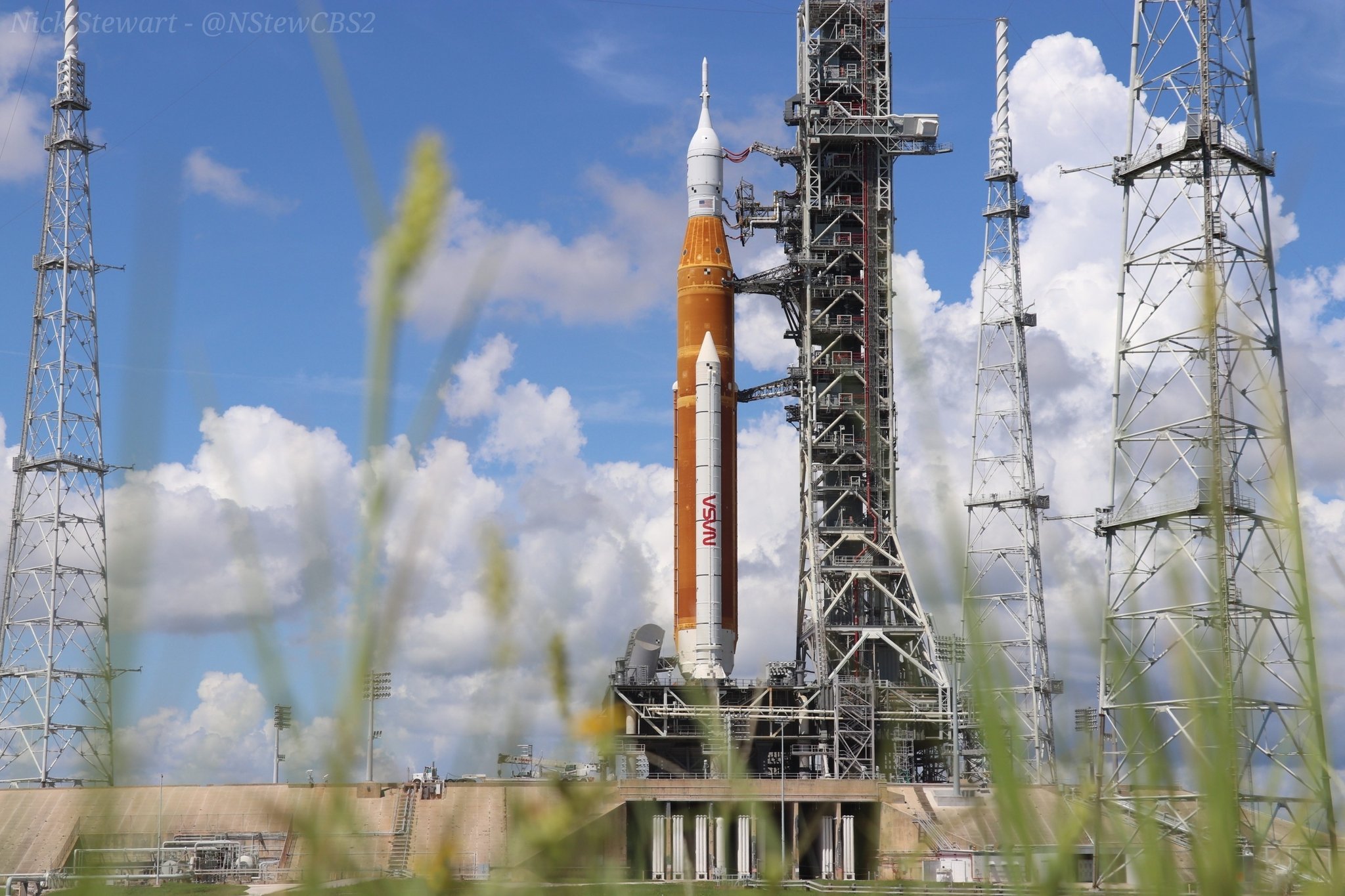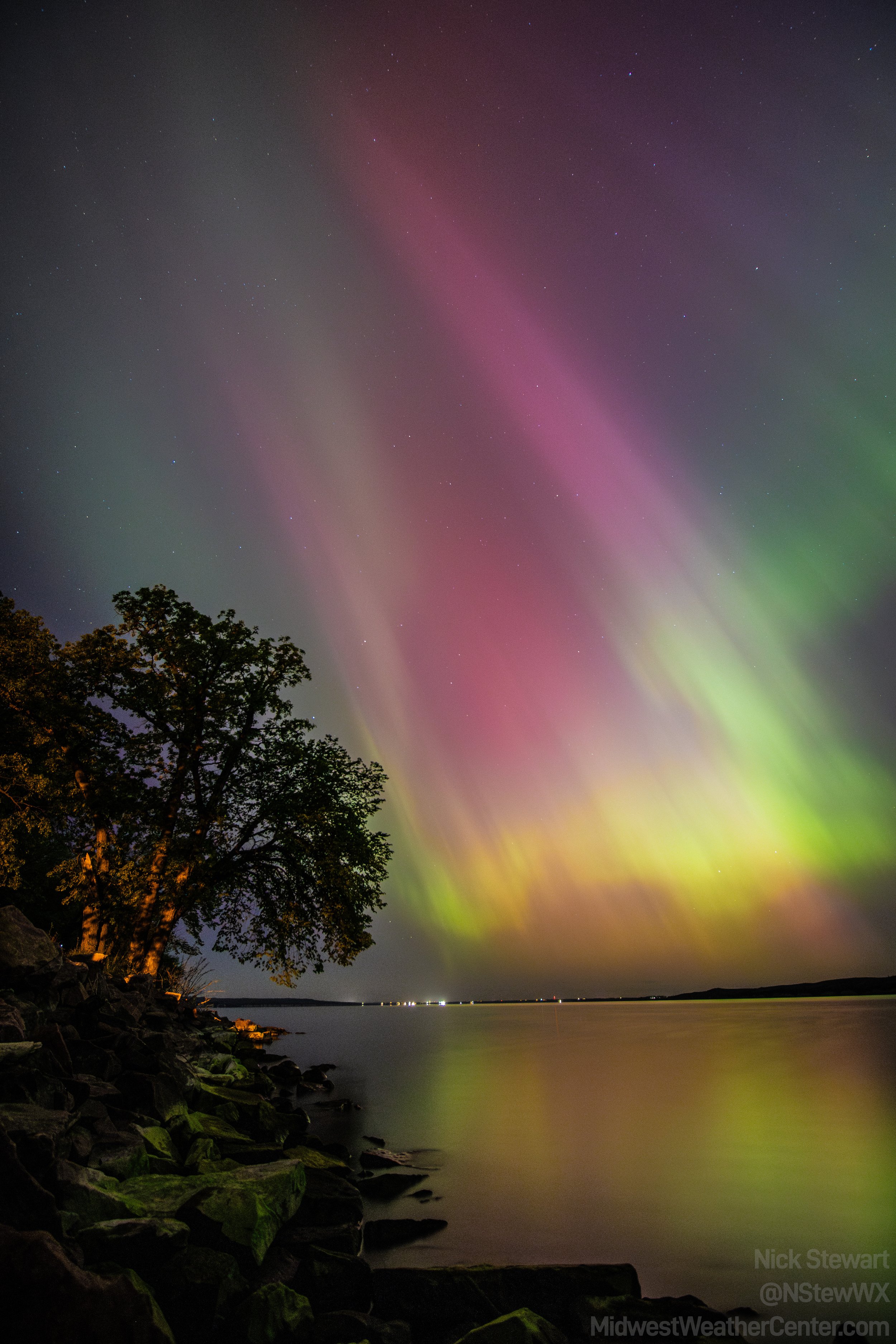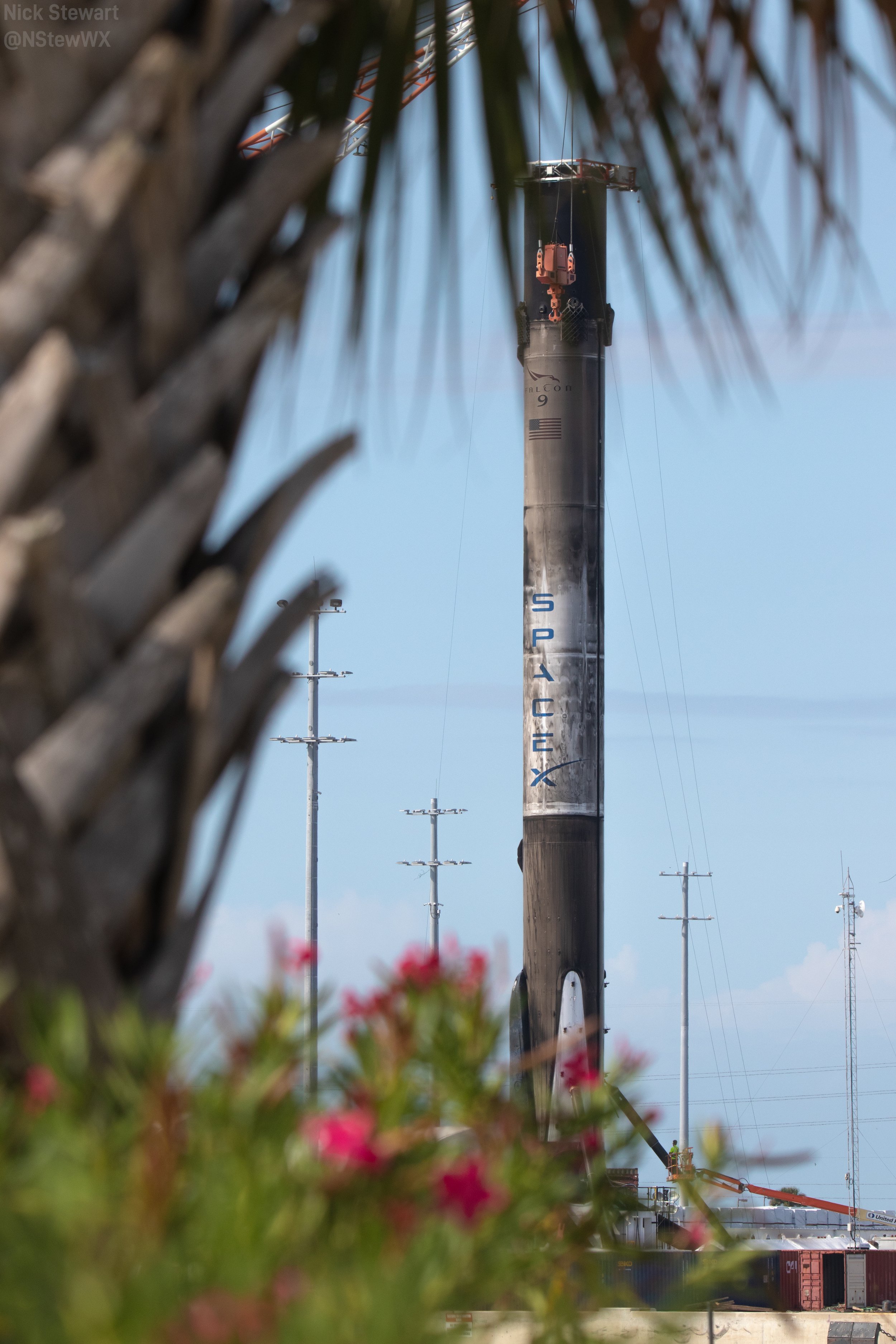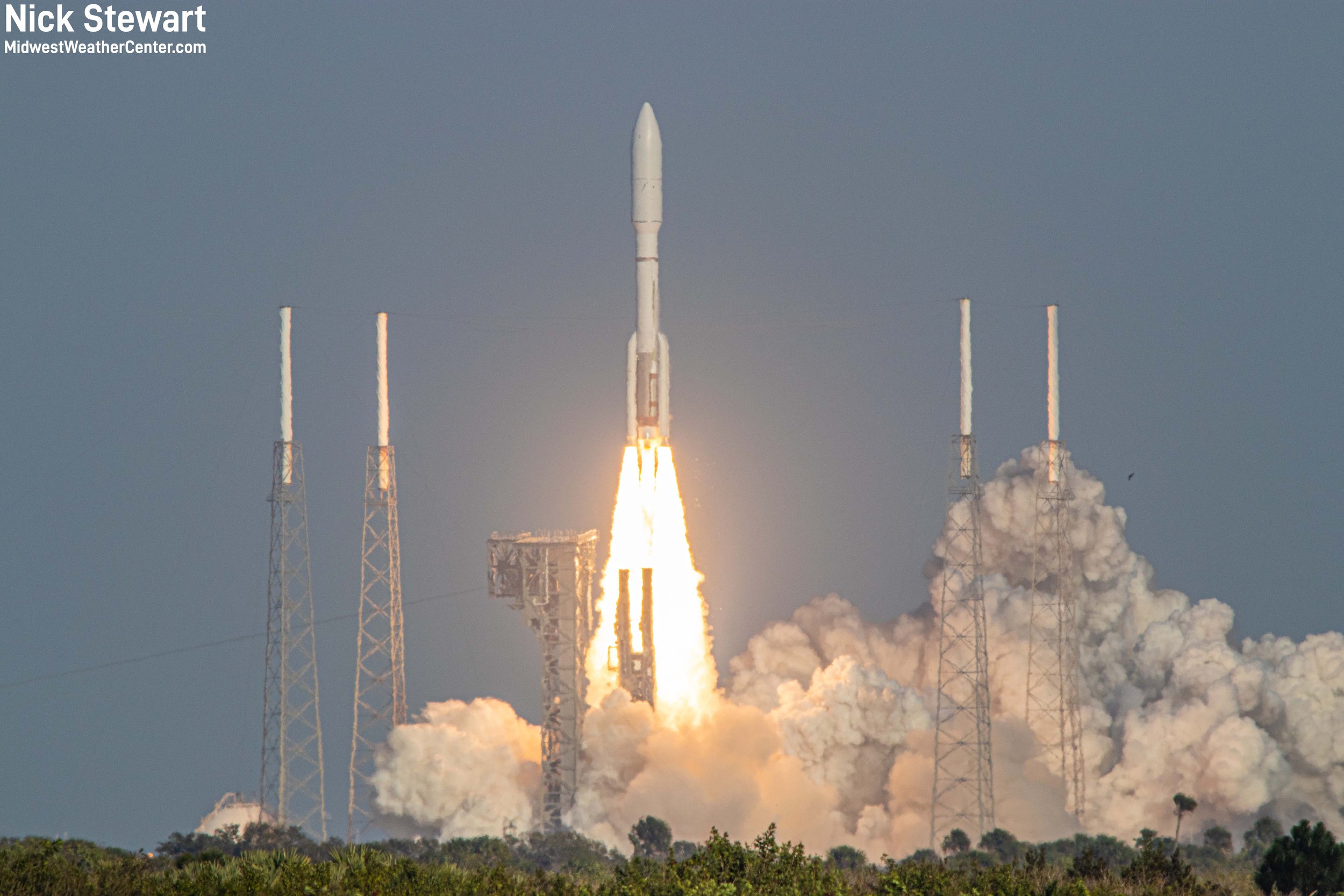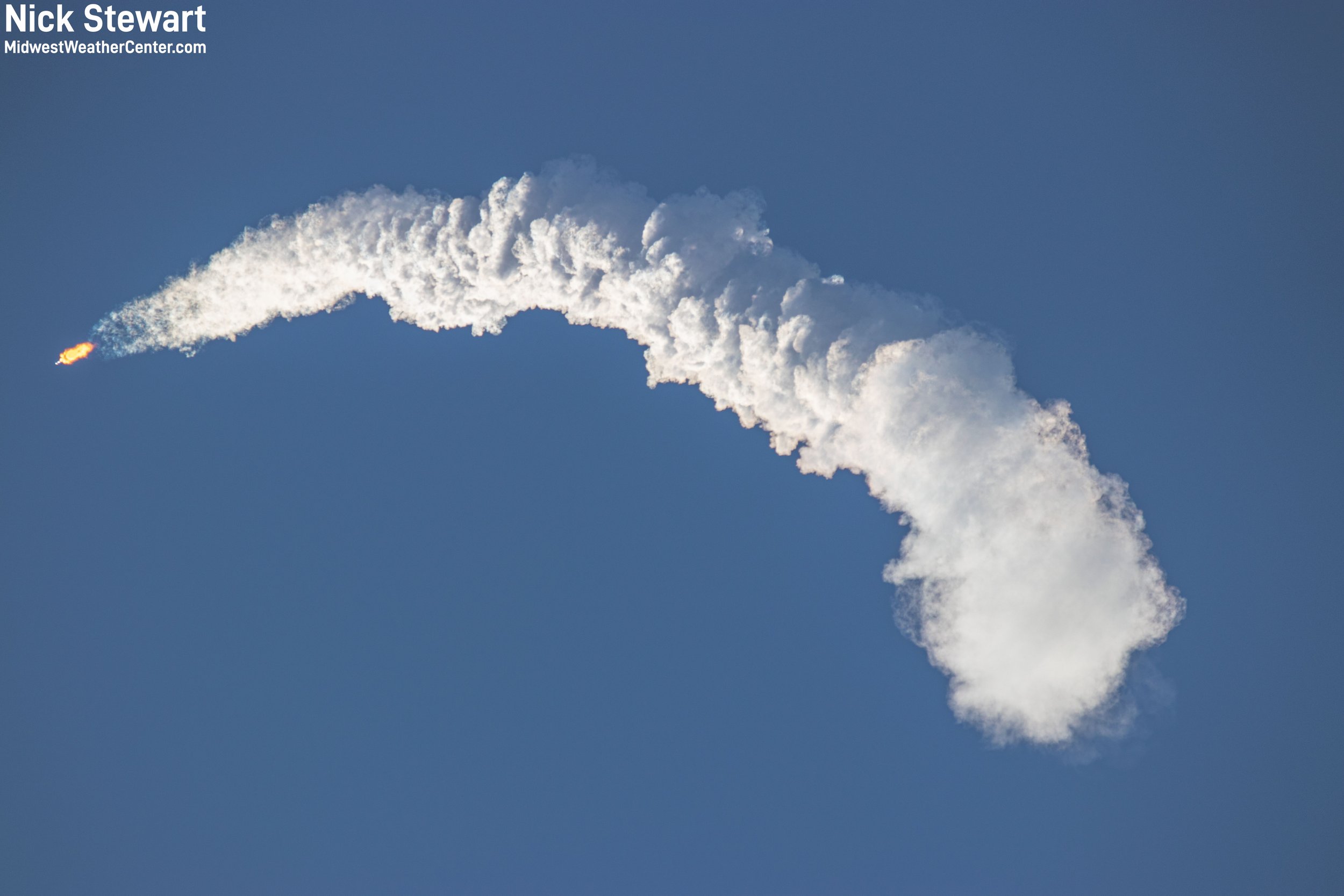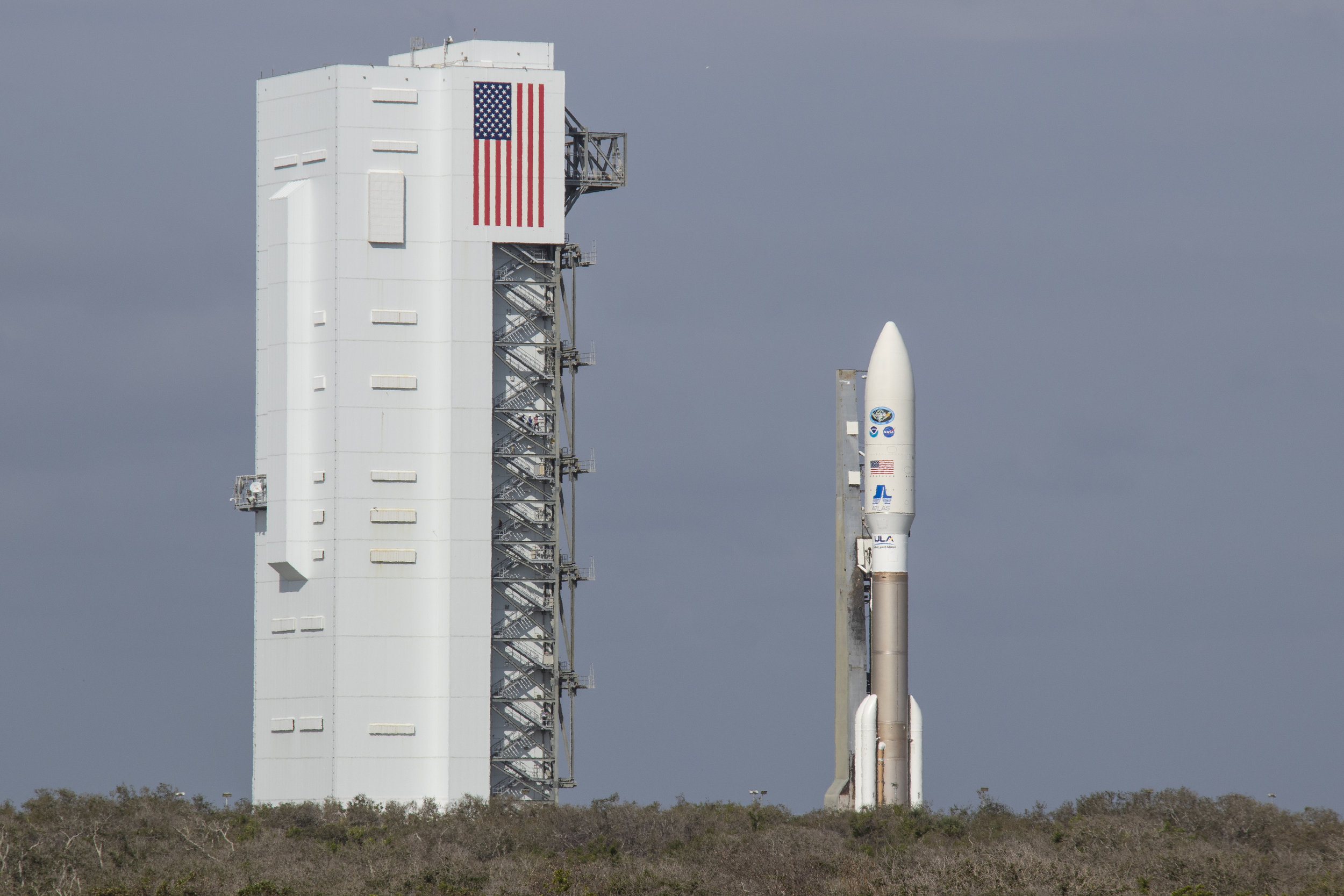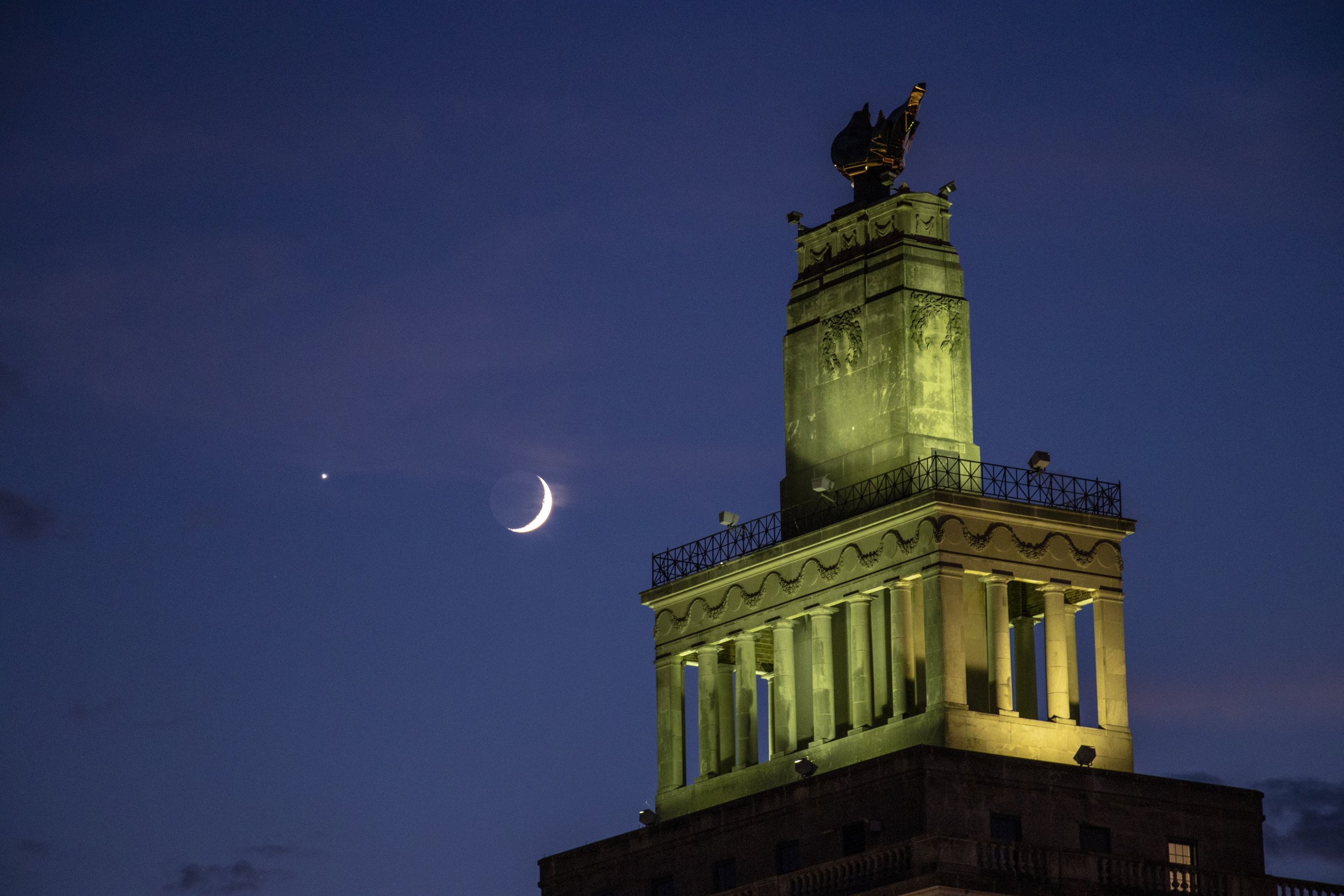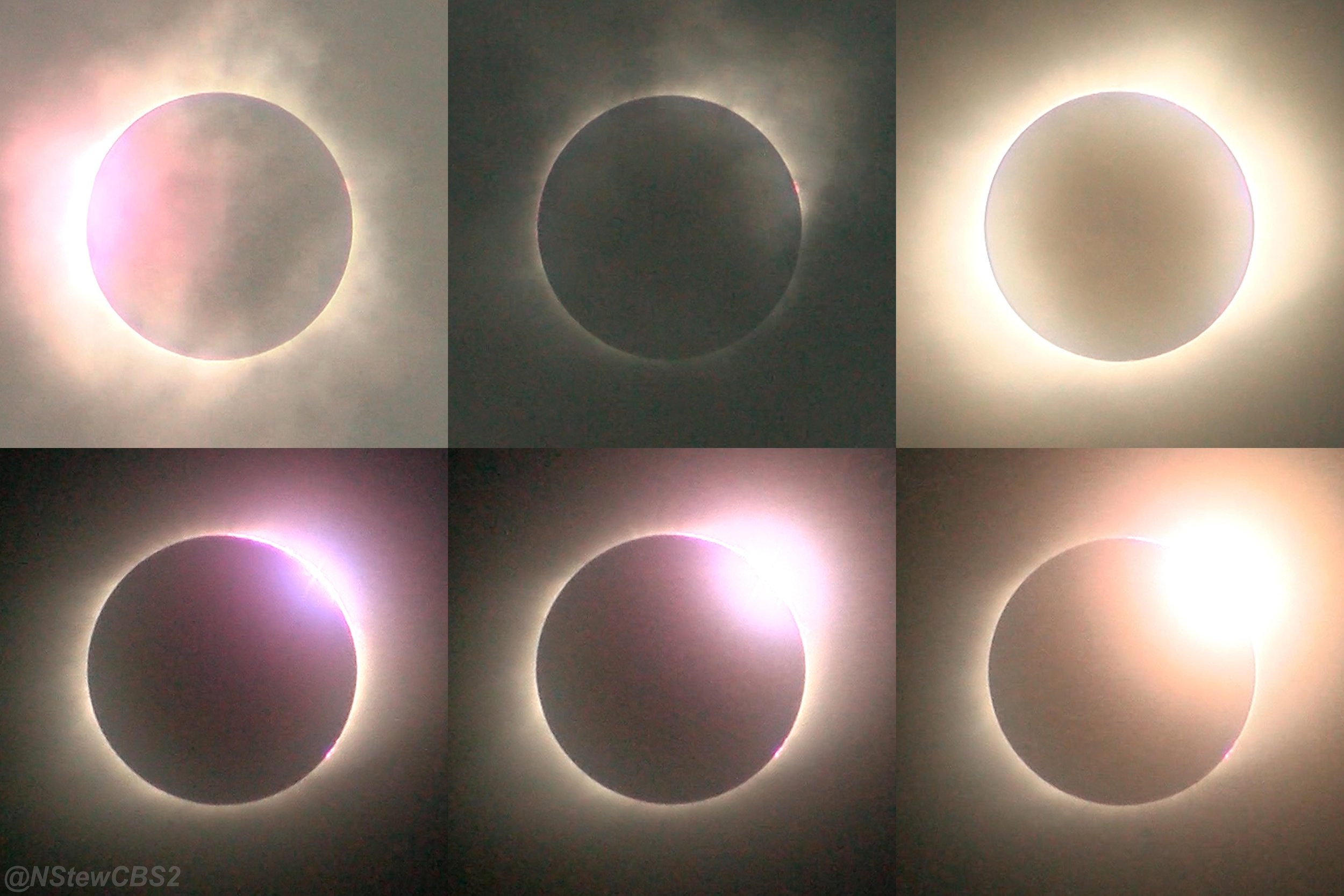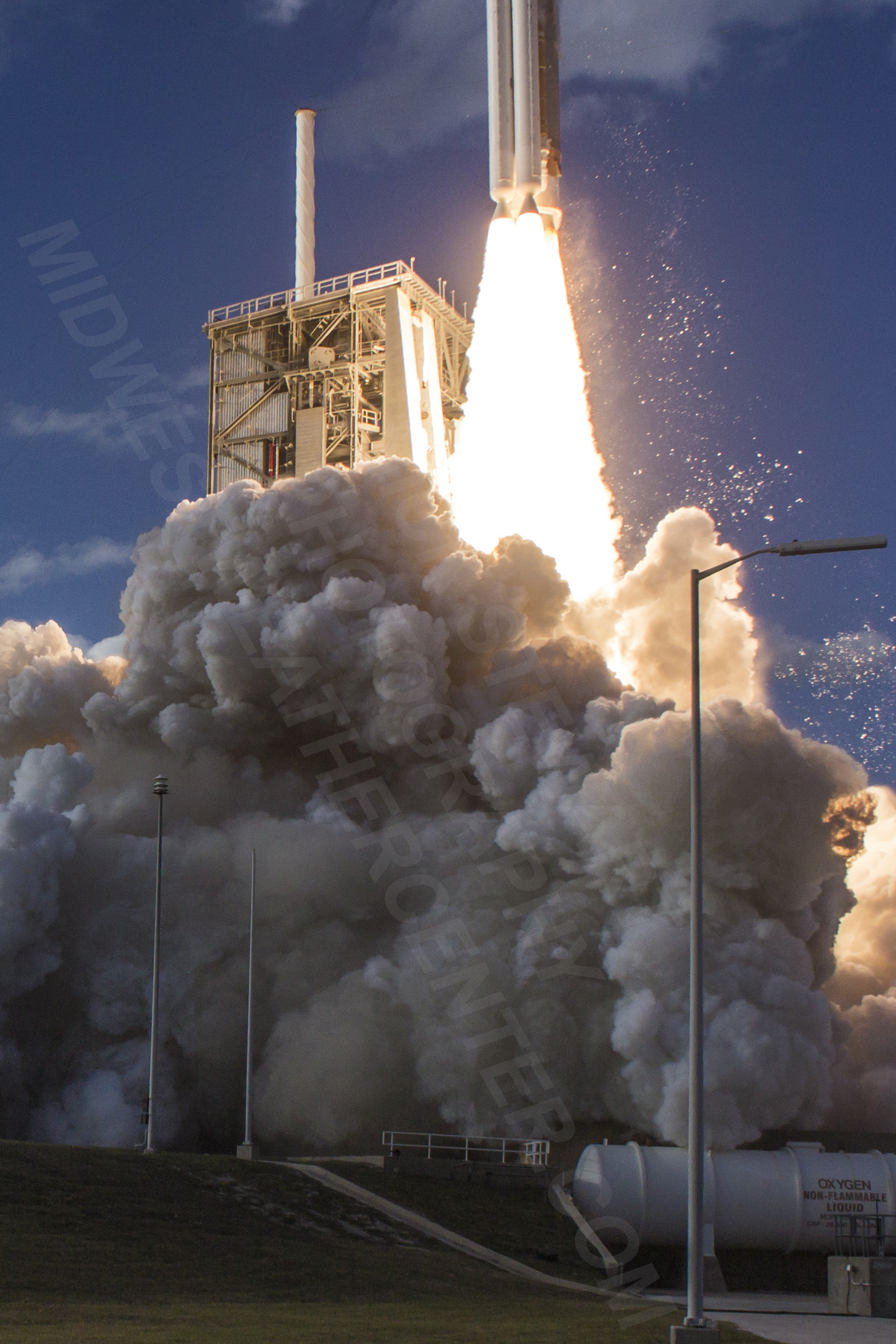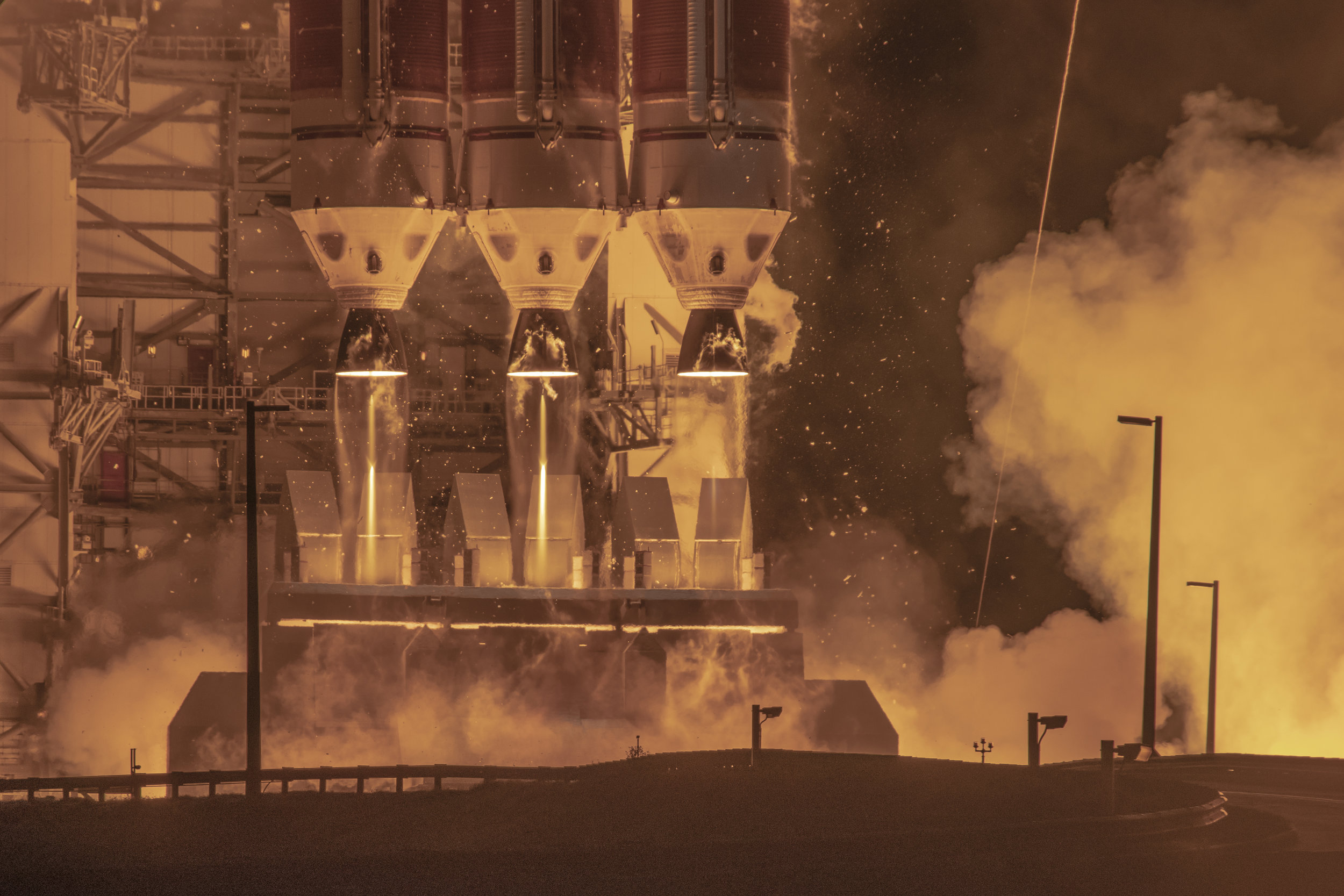Rocket and Space
Rockets with millions of pounds of thrust at takeoff, long-exposure images of the night sky, brilliant Northern Lights displays and deep-space objects instill such great interest and awe. Prints of these photos and more can be found on the online store.
The Falcon Heavy USSF-52 mission over the Cape Canaveral Lighthouse featuring the liftoff, stage separation, booster boostback, entry burn and landing at the Cape Canaveral Space Force Station.
SpaceX Starlink 12-21 heads to space against a clear sky.
A United Launch Alliance Atlas V ‘Dominator’ blasts off carrying NOAA’s GOES-T weather satellite.
Artemis-I, America’s next generation Apollo, blasts off from the Kennedy Space Center in the dead of night.
The Northern Lights erupt over the Missouri River in May 2024.
A rural highway descends into the Northern Lights in northeast Nebraska in May 2024.
A SpaceX Falcon 9 cruises through the night sky from the Cape Canaveral Space Force Station carrying 51 Starlink satellites to orbit, as well as a Boeing spacecraft.
A SpaceX Falcon 9 booster returns after launching the Koreasat 6A satellite to orbit.
Inaugural launch of Blue Origin’s New Glenn rocket, heading to space from the cape Canaveral Space Force Station Space Launch Complex 36.
A SpaceX Falcon Heavy blasts of from historic pad 39-A from the Kennedy Space Center with NOAA’s GOES-U, the fourth and final satellite in the GOES-R series of weather surveillance satellites, continuing our weather coverage from orbit through the mid 2030s.
Blood moon sneaks behind palm trees during the March 14 lunar eclipse.
A stunning display of the northern lights fills the night sky in central Iowa on the night of March 23, 2023.
A SpaceX Falcon 9 carries an SES satellite to orbit from the Cape Canaveral Space Force Station in June 2024.
The Northern Lights explode in eastern Iowa on April 23, 2023 with a G4 Geomagnetic Storm.
The side boosters from a SpaceX Falcon Heavy mission land synchronized at LZ-1 and LZ-2 at the Cape Canaveral Space Force Station after helping GOES-U get to orbit.
A wide-angle view from Space Launch Complex 41 at the Cape Canaveral Space Force Station as the Atlas V rocket takes flight.
Galileo L13 heads to space from SpaceX’s Space Launch Complex 40.
The Milky Way near Storm King Mountain in Colorado.
A SpaceX Falcon 9 comes in for a landing following a successful Crww-7 launch to the International Space Station.
A SpaceX Falcon 9 booster returns to Port Canaveral for processing following a successful Starlink 6-11 launch.
Long exposure startrail of the night sky.
Quiet and calm night in rural America.
From 2.9 miles away, the Atlas V rocket with four strap-on boosters shines brilliantly bright against the Florida sunshine.
The SLS, Space Launch System, turns the night into day as 8.8 million pounds of thrust propels the rocket off of Pad 39-B.
Launch of the SpaceX Falcon 9 carrying Crew Dragon during DM-1.
The SpaceX Falcon 9 rocket reaches the point of maximum aerodynamic pressure as it launches southeastward from the Florida Space Coast.
A United Launch Alliance Atlas V rocket carries the GOES-S weather satellite into orbit.
Lightning strikes one of the protection towers around NASA’s SLS rocket just days before the first launch attempt.
A small pop-up thunderstorm produces a singular lightning strike under a clear night sky. Mars is the bright red-tinted object in the sky to the right of the storm.
Comet Neowise with a long dust and ion tail, visible July 19, 2020.
LIFTOFF: The ULA Atlas V rocket ramps up and is let go from the launch pad from Cape Canaveral Air Force Station on a course for geostationary orbit.
An Atlas V rocket rolls to the launch pad from the VIF.
Venus Conjunction with the moon over Cedar Rapids, Iowa.
Deep-space long-exposure photograph of the Andromeda Galaxy.
Hydrogen ignites into a huge fireball at the base of the United Launch Alliance Delta IV Heavy rocket seconds away from the launch of the Parker Solar Probe.
The core of the Milky Way Galaxy.
UNITED WE STARED: The Great American Total Solar Eclipse.
The Atlas V rocket clears the tower at Space Launch Complex 41 as the GOES-S payload starts its trip to orbit.
The Crew Dragon sits atop the SpaceX Falcon 9 rocket at stands vertical at historic Launch Pad 39-A with the crew access arm extended to the spacecraft.
The arm of the Milky Way over Black Mesa State Park.
The Trifid (top right) and Lagoon (bottom left) Nebulas
The United Launch Alliance Delta IV Heavy rocket takes off from Space Launch Complex 37 at Cape Canaveral Air Force Station carrying the Parker Solar Probe.
A Falcon 9 carries a fresh batch of Starlink satellites to orbit.
A July night sky over Iowa.
